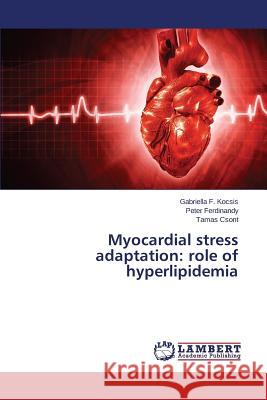Myocardial stress adaptation: role of hyperlipidemia » książka
Myocardial stress adaptation: role of hyperlipidemia
ISBN-13: 9783659591914 / Angielski / Miękka / 2014 / 60 str.
We' ve shown for the first time that gene expression pattern is altered in the myocardium of cholesterol-fed mouse in response to ischemic preconditioning. This effect is apparent in the regulation of NO signaling, oxidant producing enzymes, and the mevalonate pathway. Our was the first demonstration in human apoB-100 transgenic mice, that hypercholesterolemia but not hypertriglyceridemia is responsible for the hyperlipidemia-induced, peroxynitrite-mediated cardiac dysfunction, and that increased cardiac NADPH oxidase activity is a major source of increased oxidative stress in hypercholesterolemia. We observed first, that acute lovastatin treatment abolished the infarct size-limiting effect of ischemic preconditioning and that chronic lovastatin treatment attenuated the protective effect of ischemic postconditioning. We've also proposed that acute and chronic lovastatin treatment might modulated the cardioprotective mechanisms through different cellular pathways.
We ve shown for the first time that gene expression pattern is altered in the myocardium of cholesterol-fed mouse in response to ischemic preconditioning. This effect is apparent in the regulation of NO signaling, oxidant producing enzymes, and the mevalonate pathway. Our was the first demonstration in human apoB-100 transgenic mice, that hypercholesterolemia but not hypertriglyceridemia is responsible for the hyperlipidemia-induced, peroxynitrite-mediated cardiac dysfunction, and that increased cardiac NADPH oxidase activity is a major source of increased oxidative stress in hypercholesterolemia. We observed first, that acute lovastatin treatment abolished the infarct size-limiting effect of ischemic preconditioning and that chronic lovastatin treatment attenuated the protective effect of ischemic postconditioning. Weve also proposed that acute and chronic lovastatin treatment might modulated the cardioprotective mechanisms through different cellular pathways.











